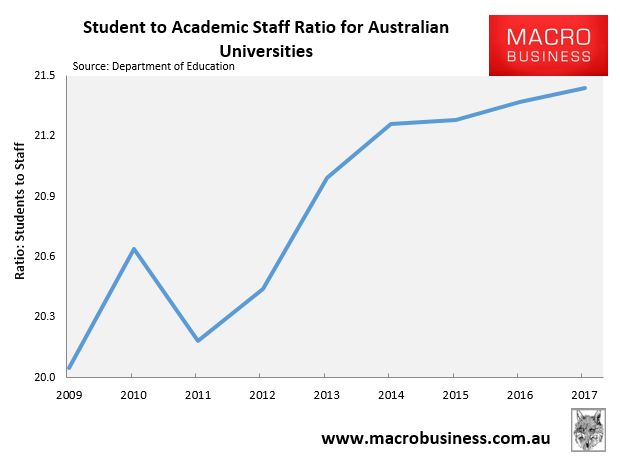Earlier this month, Australia’s Chief Scientist released a report estimating that 7,000 research jobs could disappear, due in part to the loss of revenue from international students:
Australia’s research workforce will be severely impacted by the pandemic and the effects are likely to be felt for an extended period.
Income to universities, medical research institutes, publicly funded research agencies, CRCs, and the industrial sector is suffering from the loss of foreign students and a sharp decline in business research spending and philanthropy.
Indeed, higher education analyst, Andrew Norton, estimated that 27% of university research expenditure is financed with profits from international student fees.
This has led to increasing calls for the federal government to open borders to international students.
Let’s be honest for a moment. A lot of the university research is of questionable value and is aimed squarely at catapulting universities up the bogus university rankings.
The Academic Ranking of World Universities, regarded by most top universities as the most prestigious of the international rankings, is produced by the China-based ShanghaiRanking Consultancy. It “rewards universities for their number of highly cited researchers, the volume of highly cited research papers they produced, the number of papers published in the prestigious journals Science and Nature, and the number of alumni and academic staff who have won Nobel prizes and Fields medals (the top honour in mathematics)”.
These university rankings are then used as a marketing tool to attract more international students to study in Australia.
That is, a higher university ranking means more prestige and is a sign of quality. This then encourages international students to choose that institution over another and also justifies charging higher tuition fees.
My cousin, Peter van Onselen, made this direct point over the weekend:
Throw in the fact our higher educational institutions will plummet down the world rankings without the revenue from international students they have used to top-up inadequate government funding (we trail the world on state funding) and the spiral the sector faces is obvious.
What is lost in this whole debate is the impact on domestic students.
While universities have ploughed the international student bounty into research to boost their rankings, actual teaching quality has been destroyed.
This is evidenced by the ratio of students to academic staff rising materially across Australia’s universities during the long international student boom:

The majority of international students come from Non-English Speaking Backgrounds (NESB), and require more teaching assistance than domestic students. Accordingly, the bigger student loads, alongside the higher maintenance of international students, indicates a significant decline of both teaching capacity and quality across Australia’s university system.
We have also witnessed domestic students carrying NESB students through their courses via group assignments, alongside an increase in soft marking scandals and cheating scandals as international students have ballooned.
Instead of worrying about the losing research capability and falling down the bogus world university rankings, Australia’s universities must get back to their primary role of providing high quality education to Australians.
They must stop acting like blood-sucking corporations operating low-quality degree factories for maximum revenue.

